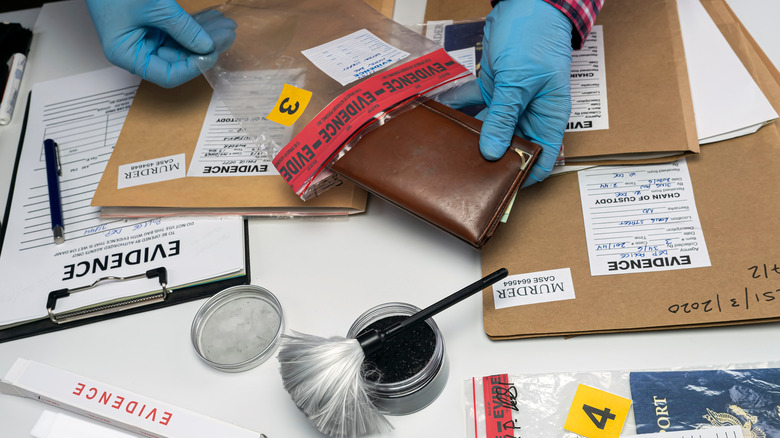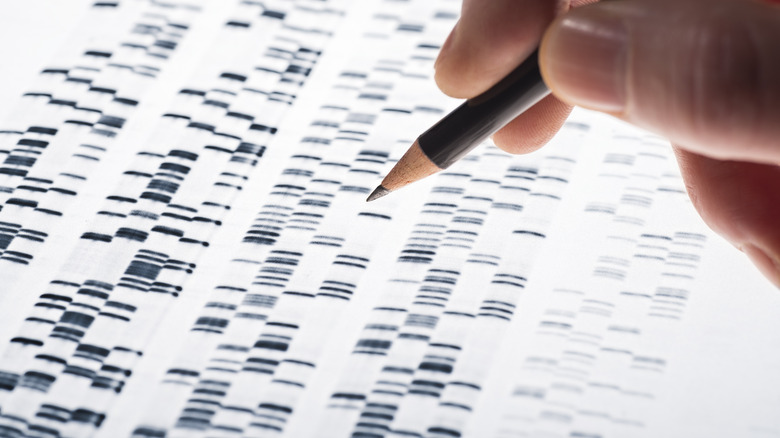What Really Solved The Diane Dahn Murder Case 34 Years Later
Diane Lynn Dahn was a 29-year-old woman who was employed as a communications technician at the San Diego Transit Corporation. On May 2, 1988, she didn't report during her scheduled shift at work, which led one co-worker to visit her home to check on her well-being. Her 2-year-old son, Mark Beyer, was discovered wandering around the residence unsupervised, and Dahn was eventually found inside her bedroom already deceased, as reported by CBS News. It was apparent that Dahn had been a victim of homicide.
Authorities from the San Diego Sheriff's Department arrived at the crime scene and collected pieces of evidence. Those who were close to Dahn were interviewed as well, but they had no idea who would want to harm the young woman (via Law & Crime). It would be more than three decades before investigators would be able to name Dahn's killer and provide some answers to her grieving family. Dahn's case was closed thanks to the perseverance of investigators and the pieces of evidence that would eventually lead to the identity of her killer.
The autopsy and investigation
According to the medical examiner who conducted the autopsy on Diane Dahn, she suffered from multiple stab wounds to the chest area and was bludgeoned with an object, as reported by the San Diego County Sheriff's Department. Scrapings from underneath Dahn's fingernails were collected in hopes of helping identify her killer through DNA. There was also a strand of hair found in her grasp that was most likely pulled out, as she was struggling to fight off her assailant.
An extensive investigation took place, but still, authorities were not able to capture the person who murdered Dahn. At the time of the crime, DNA technology was still in its infancy. In 2000, a DNA profile was identified from the scrapings collected from Dahn, but it didn't lead to the identity of a suspect. More tests were done the following year but unfortunately, the information was not enough for the profile to be uploaded to CODIS (Combined DNA Index System), the FBI's DNA database. Tests done on the strand of hair yielded a profile as well, but it didn't lead to a match. Investigators were at a dead end, and Dahn's case went cold.
Genetic genealogy
In 2010, a cold case unit revisited Diane Dahn's case. New technology had been developed throughout the years since her murder, and investigators took another look at the evidence. It was confirmed that the fingernail scrapings and the strand of hair belonged to the same individual, but when the DNA profile was submitted to CODIS, there was still no result (via San Diego County Sheriff's Department).
In 2020, investigators once again worked on Dahn's cold case. They resorted to genetic genealogy in order to find her killer. In this process, close matches to the DNA profile are looked into in order to pinpoint the potential suspect of the crime. A family tree is developed and members are filtered until authorities come up with a list of candidates, as reported by Ishi News. Investigators also look into other factors, such as the background and personal information of individuals in order to eliminate them from lists or keep them as suspects.
Creating the family trees
Coming up with the family trees based on the DNA profile of the unknown individual took some time. Investigators scoured DNA profiles on genealogy databases to develop connections, and they also contacted individuals and conducted interviews, according to the San Diego County Sheriff's Department. During interviews, detectives identify themselves and provide information about the case. They ask for assistance from direct relatives, who voluntarily provided DNA samples to confirm the identity of the killer.
It's important to note that genetic genealogy is only used as a last resort in homicide cases. In Dahn's case, all methods of identifying her killer have been exhausted, and there were no concrete results throughout the years. Most likely, the case wouldn't have been solved without the help of genetic genealogy, as said by the sheriff's department. The fact that pieces of evidence from Dahn's crime scene were well-preserved for more than three decades helped in the investigation.
The identity of Diane Dahn's killer
Investigators worked extensively on a family tree in order to track Diane Dahn's killer. According to the sheriff's office, nine family trees were created, which consisted of about 1,300 people connected to the suspect by blood or by marriage, per CBS News. It was a grueling task, but they finally uncovered the identity of Dahn's murderer — a man named Warren Robertson.
As investigators noted, Robertson was born in Arkansas, but he also spent time in San Diego in his younger years. In fact, he lived in the same apartment complex as Dahn at the time she was killed in 1988, as noted by Oxygen. Furthermore, both Dahn and Robertson were racing enthusiasts and often watched races at the El Cajon Speedway. Dahn's family has never heard of Robertson's name before his identity was revealed, and he never came up during the original investigation as well. No one knows the extent of their relationship, but the DNA left at the crime scene proved that Robertson was Dahn's killer.
Closure for the family
Investigators alerted Diane Dahn's family about the progress in her case, and they were relieved to know that Dahn's killer was finally identified. Mark Beyer, Dahn's 2-year-old son who was found at the crime scene, said that it was the closure that he and her mother's family needed after 34 years of searching for answers (via CBS News). Beyer has no recollection of the events on that fateful day, but he is grateful that the case had finally been solved. Dahn's sister stated that for years, she was worried that she would die not knowing who killed her sister. And although some of their questions have been answered, it still doesn't ease the pain of losing their loved one.
Despite identifying the suspect in Dahn's case, he wasn't apprehended. According to The San Diego Union-Tribune, it was discovered that Warren Robertson moved away from San Diego shortly after Dahn's murder, and he died in a house fire in 1999.





